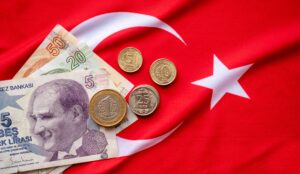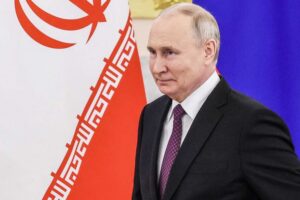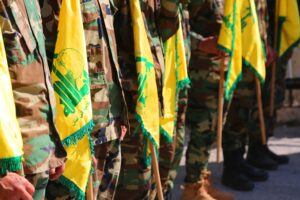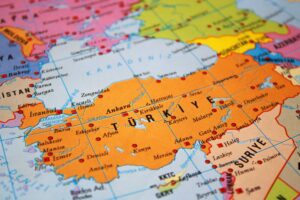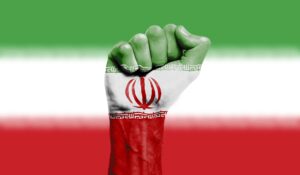This article is part of a multi-part series on Arab Gulf security.
No ruling dynasty in the Arab Gulf has played a seemingly weak hand with more skill than Doha.
In 1968, when the British announced their intention to withdraw from the Gulf, some Western experts questioned the ability of an independent Qatar to survive. The British pushed for its inclusion in the proposed “federation” of emirates in the southern Gulf; the Al Thani, the ruling family in Qatar, balked. Since then, Qatar has not only survived but also prospered. In the 21st century, it has become a critical partner and lynchpin in the Arab Gulf security strategy and managed to chart its own independent, if at times provocative, course in regional and international affairs. For almost two centuries, the Al Thani have had a storied history as improbable survivors. Managing more powerful, hostile forces around them, they have emerged stronger from the experience. Luck has played a role, but their real prowess has been understanding who they are as a dynasty and an uncanny skill in manipulating the forces around them to their advantage.
No ruling dynasty in the Arab Gulf has played a seemingly weak hand with more skill than Doha. Qatar’s past informed its present and will no doubt continue to guide its future. A series of critical assumptions underpin Qatari survival: a close relationship with the principal Western power in the Gulf is required, their Arab neighbours are the biggest threat to survival, and reasonably good relations with other regional powers are important. Furthermore, in the post-independence era, Qatar has learned that using its petroleum wealth while promoting broad regional and international dialogues within the context of a carefully controlled domestic political context offers a path to influence that largely avoids the risks of political and military intervention and overreach. In practical terms, how do these assumptions affect contemporary Qatari and Al Thani policies and to what degree are the crises of today merely a part of a historical continuum?
Qatar to 1869
The 1867 war provided a preview of the 2017 blockade.
An understanding of contemporary Qatar requires a brief examination of the process that transformed a barren, contested desert peninsula into a state with outsized influence. In the pre-Islamic period, Qatar was nominally under Persian Sassanian rule and largely Zoroastrian.[i] During the early Islamic period, the peninsula was incorporated into the various caliphates with an established identity often related to cattle and camel raising.[ii] By the 16th century, Qatar found itself dealing with the arrival of the Portuguese and their Hormuzi allies. The Qatari tribes preferred Ottoman rule to that of a European interloper allied with Arab rivals. Although nominally an Ottoman vassal, the Qatari tribes pursued their own interests in the triangular imperial struggle between the Ottomans, the Safavids and the Portuguese for dominance in the Gulf. In the mid-17th century, the Dutch and the British East India companies and Shah Abbas the Great in Persia (r. 1588–1629) upended the Portuguese, and Qatar became a part of the Bani Khalid tribal confederation that exercised control over the northern Gulf littoral into the 18th century.[iii]
In the 18th century, the Utub migrations from the Nejd brought establishment of the Al Sabah to Kuwait, the Al Khalifah to Zubarah and the migration of another Nejdi tribe, the Al Thani, to southern Qatar. No formal state existed, but the peninsular tribes shared an antipathy to the Al Khalifah. The Al Thani were increasingly the most prominent opponent. In the Arabian tribal hierarchy, the Al Thani claimed a more prominent position. At the time, the Al Musallam tribe controlled most of Qatar.[iv] In 1710, the Al Sabah and the Al Khalifah arrived at Zubarah but were forced to leave forthwith by the Al Musallam and the Bani Khalid.[v] In 1766, the Al Khalifah returned and established themselves at Zubarah. The Al Thani claimed equal tribal standing with the Al Musallam and familial precedence over the Al Khalifah, and thus refused to pay them zakat or show deference.[vi] During the same period, Qatari tribes became a haven for opponents of the Al Nahyan clan of the Bani Yas who had established themselves at Abu Dhabi. In the mid-19th century, these frictions bubbled over. In 1867, the Al Khalifah and the Al Nahyan attacked the Al Thani and their Qatari allies. After initial setbacks, the Qataris were miraculously victorious.[vii] The British punished the Al Nahyan and the Al Khalifah for violating their agreements under the British-imposed Trucial maritime peace and recognised the Al Thani as the rulers of an independent Qatar. In hindsight, British recognition had the appearance of a watershed event. From the Qatari perspective, however, it merely alleviated one existential crisis leaving the Al Thani to anticipate the next. The 1867 war provided a preview of the 2017 blockade. From the 16th century to the 21st, tribal and dynastic frictions created an almost 300-year continuum of conflict.
The Qatar Gap 1869 to 1995
Fear of Saudi expansion brought the Al Thani full circle back to the British as the only viable option for protection.
Following the end of the 1867 war, the British began to focus on the unresolved status of the Qatari peninsula. In 1869, Ahmad Sefik Medhat Pasha, the new Ottoman governor in Baghdad, moved to reclaim the Porte’s authority in the Gulf and reestablished Ottoman suzerainty over Qatar.[viii] In 1871, acting on behalf of his father, Sheikh Jasim bin Mohammed Al Thani (r. 1876–1913) welcomed the Ottoman initiative. While British recognition promised maritime security, the Ottoman presence mitigated the land-based threat from Arabia.[ix] The Al Thani “recognised” Ottoman authority with no intention of submitting to it. In 1902, when the Third Saudi State (1902–1932) emerged in Nejd, Sheikh Jasim allied himself with Ibn Saud and adopted Wahhabi Islam as insurance against Ottoman attempts to reassert direct control. When the Saudis expelled the Ottomans from Arabia in 1913, fear of Saudi expansion brought the Al Thani full circle back to the British as the only viable option for protection against Riyadh.[x]
For London, the discovery of oil in Persia and the Gulf demanded a more stable regional security arrangement that secured British interests. Istanbul’s flirtations with Germany and Russia, along with various other policies, threatened British strategic interests. In 1913, leveraging Ottoman weakness, the British negotiated the Anglo-Ottoman Convention which, among other things, placed Qatar and the Al Thani under British protection. Disrupted by World War I, the convention was never ratified. Nevertheless, wasting little time, in 1916, Sir Percy Cox, the ubiquitous British political agent for the Gulf, concluded an agreement with Sheikh Abdullah bin Jasim Al Thani (r. 1914–1949) taking control of Qatar’s foreign, defense and commercial policies. Rivalries within the Al Thani family and postwar economic difficulties created problems, but the British had closed the “Qatar Gap.”[xi]
To prevent succession disputes, the British encouraged a policy of abdication in favour of a preferred successor. In 1949, Sheikh Abdullah abdicated in favour of his son Sheikh Ali (r. 1949–1960) who in turn abdicated in favour of his son Sheikh Ahmad bin Ali Al Thani (r. 1960–1972). Nevertheless, Sheikh Khalifah bin Hamad from the rival Hamad clan emerged as the most powerful figure in the government as Qatar developed into a small wealthy petroleum rentier state protected by the British. Then, in 1968, London announced that it would be “leaving” the Gulf. Resistant to losing its identity and independence in a federation, Qatar opted for independence. A consensus emerged that Sheikh Ahmad’s lack of interest and competence in governance required his removal. In 1972, with British and Saudi backing, the prime minister Sheikh Khalifah bin Hamad Al Thani (r. 1972–1995) took control. By the 1990s, Sheikh Khalifah’s dated ideas and personal style of rule made it impossible for him to adapt to new realities in the region. Given Islamic radicalisation, the Iraqi invasion of Kuwait and an unwillingness to implement political reforms, opposition to his rule mounted. The situation required new leadership with fresh ideas.
The Hamad Line and Contemporary Qatar
Cordial relations between Qatar and its Gulf neighbours would always be ephemeral.
In a bloodless coup on June 27, 1995, Sheikh Hamad (r. 1995–2013) deposed Sheikh Khalifah. Coincidentally, the coup occurred two days after the terrorist strike on US troops housed at the Khobar Towers complex in Dhahran, Saudi Arabia, sparking a US search for a more secure home for its expeditionary forces in the region. Sheikh Khalifah’s removal also raised concerns in Riyadh and Abu Dhabi that Sheikh Hamad’s progressive ideas would threaten the status quo. In 1996, an attempted coup by border tribes and supporters of the old Emir failed; presumed Saudi involvement soured Saudi-Qatari relations.[xii] This combination of events—the strike on Khobar Towers and the coup attempt—brought about a quick agreement to build al-Udeid Air Force Base and shift US military assets, including the alternate command post for US Central Command, to Qatar. In less than a year, Qatar had catapulted from a minor allied Gulf State to a crucial US ally displacing Saudi Arabia as the preferred basing location for US forces. Given dynastic jealousies in the region, these developments exacerbated Gulf Arab tensions.
Other developments in Qatar upset Doha’s erstwhile Gulf Cooperation Council (GCC) allies. Hamad envisioned a new role for Qatar: In 1996, the government established what is now the most influential multimedia outlet in the Arab World—Al Jazeera. As Qatar’s society became more open, the outlet became a platform from which various groups and the Qataris themselves took their regional rivals to task. The Qataris also took on the role of mediator and conflict resolution, establishing communication with groups that not only threatened the stability of the region but often opposed other GCC regimes. At the same time, Qatar also became a centre for Western-style education, welcoming branches of US and European universities. As a popular educational destination, other regimes feared the propagation of progressive attitudes and ideas.
Qatar's Gulf neighbours see Doha's accommodations with Iran as a threat.
The ultimate aggravation was Qatari-Iranian relations. From the early 1990s, Qatar and Iran shared the output from the largest gas field in the world, which required a good working relationship. Qatar’s Gulf neighbours see Doha’s accommodations with Iran as a threat. This aggravation is compounded by the Qatari view that Iran has historically constituted less of a threat to the Al Thani dynasty and Qatari independence than its temperamental Arab neighbours. Frictions with Saudi Arabia brought objections to oil and gas projects, boycotts of Islamic summits in Doha, ambassadorial recalls in response to Saudi dissidents on Al Jazeera and a long list of other conflicts. When asked about its ties to Iran, Syria, the Muslim Brotherhood and other regional dissidents, a senior Qatari military officer stated, “Qatar needed options – today’s friends are often tomorrow’s enemies. That is our reality.”[xiii] During a period of “rapprochement” and compromise, like in 2006 to 2010, Doha kept a wary eye on the next flash point that was undoubtedly just around the corner. In this case, it was the Arab Spring.[xiv]
Qatar’s rise to prominence as an enabler of diplomatic options, its role as a key US ally in Gulf security arrangements and its role with problematic groups and states were growing sources of irritation. This demonstrated that cordial relations between Qatar and its Gulf neighbours would always be ephemeral. The events of the Arab Spring and Qatar’s engagement with Islamist movements merely provided the most recent ignition point.[xv] Between 2011 and 2017, tensions over Qatar’s relationship with the Muslim Brotherhood, criticism from Al Jazeera, defense relationship with Turkey and, of course, its relationship and cooperation with Iran escalated tensions. In 2013, Sheikh Hamad followed the Qatari precedent and abdicated in favour of his son, Sheikh Tamim bin Hamad Al Thani (r. 2013–present) who continued to push Qatar’s independent policy. Ambitions in Riyadh and Abu Dhabi, and overestimates of their influence and capabilities, resulted in the 2017–2021 Qatar Blockade. It was a colossal case of overreach. The “Arab Quartet,” particularly Riyadh and Abu Dhabi, fundamentally misunderstood the US position on Qatar. They confused President Donald Trump’s personal comments and Twitter declarations with policy. They also grossly underestimated the support, direct and indirect, that Qatar would receive from other GCC states, Europe, Turkey and, last but not least, Iran.
The Qatar crisis has never been “over”—it is a fixture in Gulf Arab relations.
The similarity in causes between “The Blockade” and the 1867 war was uncanny—the participants were, with some differences, largely the same. Like the attempted coups against Emir Hamad in 1996, 2002 and 2006, the blockade reflected almost two centuries of Al Saud, Al Khalifah and Al Nahyan animus arising from perceived threats to dynastic stability and clashing interests.[xvi] The specific disagreements differed, but the fundamentals of dynastic rivalries aggravated by persistent policy conflicts were remarkably similar. The blockade strengthened Qatar’s self-sufficiency. Doha expanded its deep-water ports, established a dairy and cattle business, adjusted airline routes and found alternatives to goods and services provided by the Quartet. Oman and Kuwait refused to cooperate and benefited by cornering Qatari trans-shipment trade at the expense of Dubai, Ras al-Khaymah and Ajman. Blockade or not, the UAE had no option but to continue purchasing Qatari-Iranian gas through the Dolphin pipeline because it fired over 90 percent of Emirati power plants. Egypt “participated” in the boycott while simultaneously courting Qatari investment. Despite US interests, the presence of Turkish troops, the Iranian links and the lack of GCC unity, Riyadh and Abu Dhabi convinced themselves that Doha would accede to their 13 demands: these included shuttering Al Jazeera, downgrading Qatari relations with Tehran, removing Turkish forces and ending support for the Muslim Brotherhood. None of this was going to happen.
Qatar was able to withstand the embargo; strengthen defense ties with the US, Britain and France; expand its defense relationship with Turkey; and strengthen its links to Iran. In addition, it became the site for the 2022 FIFA World Cup. At the January 2021 GCC summit, the Quartet ended the blockade and restored diplomatic relations. Why the climb-down? The Quartet had gained a better appreciation of the perils of overreach, and they had other problems: Yemen, the Khashoggi assassination fallout, damaged trade in the UAE, Egypt’s need for Qatari investment and Qatar’s mediation efforts in Afghanistan. Samuel Ramani commented in Foreign Policy, “Although the end of the Qatar blockade is a positive development, the Gulf crisis is far from over.”[xvii] This is an understatement. The Qatar crisis has never been “over”—it is a fixture in Gulf Arab relations.
Qatar, Gulf Security and the Future
Qatar is a lynchpin in the US security structure in the Gulf.
From a Western point of view, and certainly from the Al Thani perspective, Qatar’s independence is far more important than illusions of Arab unity in the Gulf. The GCC is the gift of the Iranian Revolution of 1979 and would likely have never happened without it. Qatar is acutely aware of where real threats to its sovereignty originate. Western and often Arab conceptions of GCC utility are frequently blurred. It is not and will never be an “Arab NATO.” The dynastic frictions are almost three centuries old; Arab Gulf alliances and real cooperation are ephemeral. The Al Thani know that survival is a function of their outside relationships—the United States, Europe, Turkey and even Iran. Looking beyond egos and insecurities, Qataris understand that the only state with the unilateral ability to protect the Arab Gulf is the US. In Qatar’s case, its other relationships have value—the presence of the Turkish armored brigade, British and French hardware and training, cooperation with Iran on petroleum and so on—but the real insurance policy is al-Udeid, prepositioned US hardware, the CENTCOM alternate headquarters and 10,000 US military personnel.
Conversely, Qatar is a lynchpin in the US security structure in the Gulf. Oman and Kuwait provide the critical bookends at Hormuz and the head of the Gulf, but the facilities, operational freedom and geographical location make Qatar, and thus Al Thani rule, irreplaceable. The Al Thani also appear to have a better understanding of the essential role of the US to regime survival. Alone or in combination, none of the Arab Gulf states can stand up to Khomeinist Iran. Without direct US military support or intervention, arrangements with China, deals with Israel, pro-Russian posturing and purchases of high-tech military aircraft and hardware are of little existential value in the face of a determined external threat.
Qatar has expanded its influence through conflict mediation. The regime has maintained relations with the Taliban, the various wings of the Muslim Brotherhood, the Houthis in Yemen and other groups—some branded by various parties as terrorists. Qatar’s relationships, often viewed as problematic, yielded positive attempts to diplomatically ameliorate conflicts. In addition, while the leadership in Saudi and the UAE have antagonised the US over issues ranging from petroleum policy to the Ukraine War, technology protection and China, Qatar’s policies have been more business-like and less confrontational even in cases of disagreement. The fact that Saudi Arabia and the UAE will sell their petroleum at market prices and focus on self-interest merely enhances the value of Qatar and Al Thani rule. Saudi Arabia and the UAE are important because of oil production, but Al Thani rule in Qatar, Al Sabah rule in Kuwait and Al Bu Said rule in Oman form the crux of strategic Western security policy in the Gulf. In terms of inter-Arab relations, the Al Thani merely await the next round of their 200-year-old “crisis.”
[i] Allen J. Fromherz, Qatar: A Modern History (Washington, D.C.: Georgetown University Press, 2012): 42–45.
[ii] Habibur Rahman, The Emergence of Qatar: The Turbulent Years 1627–1916 (London: Kegan Paul, 2005): 2.
[iii] Ibid., 16.
[iv] “Tribal Families in Qatar,” Harvard Divinity School — Religious Literacy Project, 6 March 2016. http://rlp.hds.harvard.edu/faq/tribal-families-qatar.
[v] “The Line of Succession: The al-Thani Rule in Qatar”, Gulfnews, 24 June 2012. https://gulfnews.com/world/gulf/qatar/line-of-succession-the-al-thani-rule-in-qatar-1.1201210
[vi] Rahman, Emergence of Qatar, 17.
[vii] The Second Saudi State (1824–1891) was not directly involved only because of an internal Nejdi political collapse, and the Ottomans were in no position to intervene.
[viii] Frederick F. Anscombe, The Ottoman Gulf: The Creation of Kuwait, Saudi Arabia, and Qatar (Ithaca: Cornell University Press, 1997): 134.
[ix] J. B. Kelly, Britain and the Persian Gulf 1795–1880 (London: Oxford Press, 1968): 765.
[x] J. B. Kelly, Eastern Arabian Frontiers (London: Faber and Faber, 1964): 94–95.
[xi] Richard H. Sanger, The Arabian Peninsula (Ithaca: Cornell University Press, 1954): 123–124.
[xii] Anthony H. Cordesman, Bahrain, Oman, Qatar, and the UAE (Boulder, CO: Westview Press, 1997): 224.; Cordesman’s book, written in 1997, alluded to the involvement of a mercenary French officer and various tribal levies including Yemeni elements supported by Saudi Arabia, Bahrain and the UAE. Interestingly, Paul Barril, the French officer leading the coup, has given interviews, some of which were reported on Al Jazeera, stating that he was in fact paid by Saudi Arabia, the UAE and Bahrain to coordinate the coup and that he only desisted when French President Jacque Chirac ordered him to stop this “foolishness.” “Qatar 1996 coup plot: New details reveal Saudi-UAE backing,” Al Jazeera, 17 December 2018: https://www. aljazeera.com/news/2018/12/17/qatar-1996-coup-plot-new-details-reveal-saudi-uae-backing.
[xiii] Discussion of Qatar’s role in the Gulf and statement by senior Qatari military officer with access to the highest levels of the Qatari government. September 2008.
[xiv] Sultan Sooud Al Qassemi, “How Saudi Arabia and Qatar Became Friends Again”, Foreign Policy (21 July 2011. https://foreignpolicy.com/2011/07/21/how-saudi-arabia-and-qatar-became-friends-again/.
[xv] Jane Kinninmont, “The Gulf Divided: The Impact of the Qatar Crisis”, Chatham House 30 May 2019. https://www.chathamhouse.org/2019/05/gulf-divided-impact-qatar-crisis-0/2-reasons-dispute.
[xvi] Ibid.
[xvii] Samuel Ramani, “The Qatar Blockade is Over but the Gulf Crisis Lives On”, Foreign Policy, 27 January 2021. https://foreignpolicy.com/2021/01/27/qatar-blockade-gcc-divisions-turkey-libya-palestine/.





